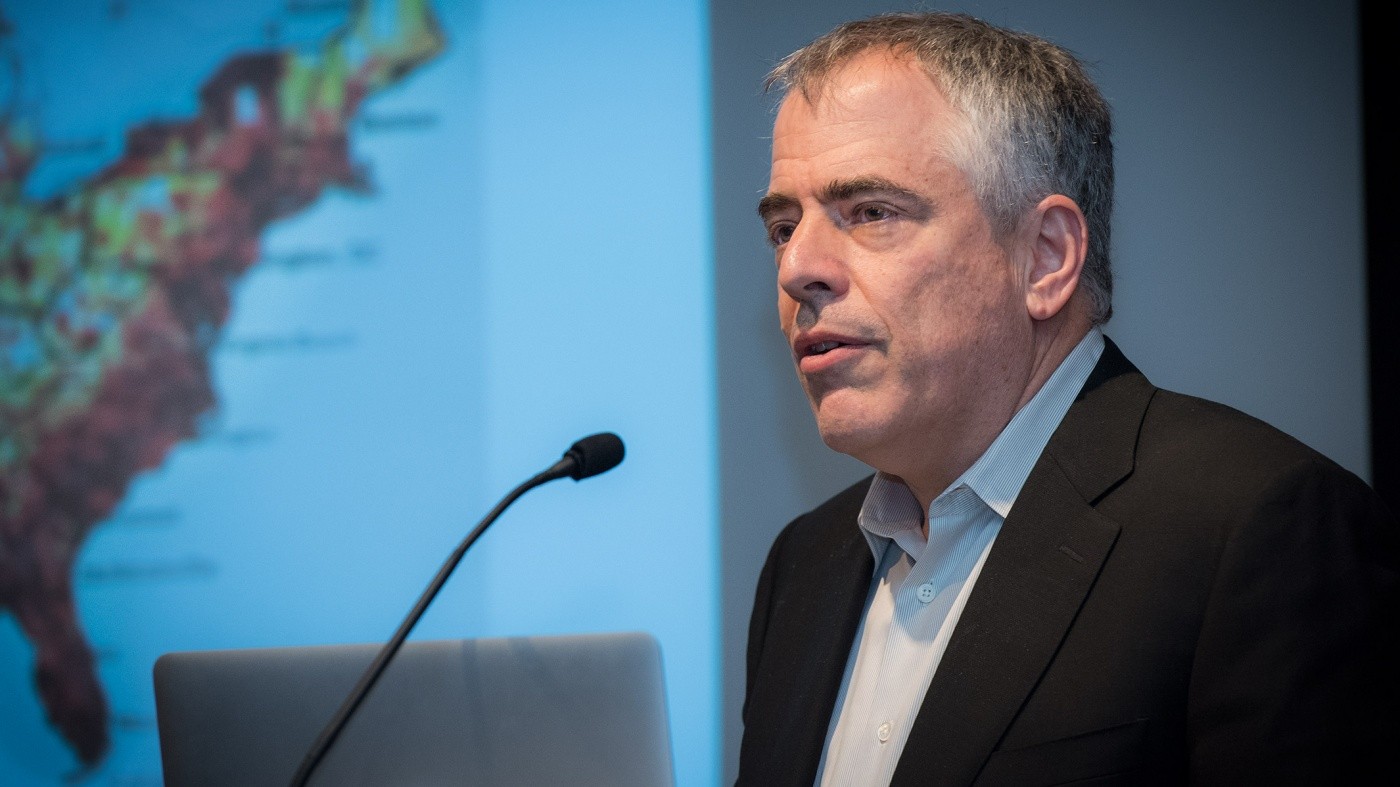
Louis J. Picker, MD, delivering the 2015 Merle Sande Memorial Lecture. [Photo: Chris Goodfellow, Gladstone Institutes]
Since the AIDS pandemic began over three decades ago, more than 75 million people have been infected with HIV, and 38 million people have died. While antiretroviral drugs have had a huge impact, there is still no vaccine and no cure. Treatment must be given for life. With 2 million new documented HIV infections and 1.5 million AIDS-related deaths each year, most in the developing world, the ongoing quest for a cure becomes even more urgent.
Now, researchers believe that they are one step closer to solving the puzzle.
On November 30, Louis J. Picker, MD, professor and associate director of the Vaccine and Gene Therapy Institute at Oregon Health & Science University, visited the Gladstone Institutes to present his research in the Merle Sande Memorial Lecture. His talk was entitled “Cytomegalovirus Vectors as an Ancient Warrior to Defeat HIV.” Picker, also a senior scientist in the Pathobiology and Immunology Division of the Oregon National Primate Research Center (ONPRC), asserted that cytomegalovirus (CMV) might be the tool scientists have been searching for to create the first vaccine against HIV.
“Elimination of HIV and AIDS is more than a quest.” Picker urged. “It is truly imperative for humankind.”
During the lecture, Picker discussed his work showing that an extensive treatment with CMV, a persistent virus that stays in the body without causing symptoms, can be used to target and clear SIV, a close cousin of HIV that infects rhesus macaques. He suggested that these vectors might also create an immune response that could be used more broadly to attack tuberculosis, malaria, hepatitis B, and other viral and nonviral diseases. In SIV-infected macaques, Picker’s team found that a CMV-based vaccine cleared the virus in 50% of the monkeys by eliciting and maintaining a powerful, but non-traditional, cytotoxic T-cell response. Why the virus was not cleared in the other half of the monkeys is unknown.
“The fact that Louis, using a CMV vaccine, can cure 50% of infected monkeys is quite remarkable.” said Warner Greene, MD, PhD, director of HIV research at Gladstone. “This represents one of the most promising leads in HIV-cure research––we are all waiting anxiously to see whether this translates to HIV-infected patients.”
Picker explained that clinical trials are gearing up to test the safety and efficacy of a human version of the vaccine.
“The road to eradicating HIV has been long, but we are making progress,” Picker said. “I firmly believe that, together, we can finish the job that Merle Sande started 34 years ago.”
The Merle Sande Memorial Lecture was established to honor Merle A. Sande, MD, former chief of medicine at San Francisco General Hospital (SFGH), who helped found the Gladstone Institute of Virology and Immunology. At SFGH, Sande created the first inpatient unit in the world that was dedicated to the care of patients with AIDS. The Merle Sande Lecture features scientists who have made prominent progress towards a cure for HIV/AIDS.

